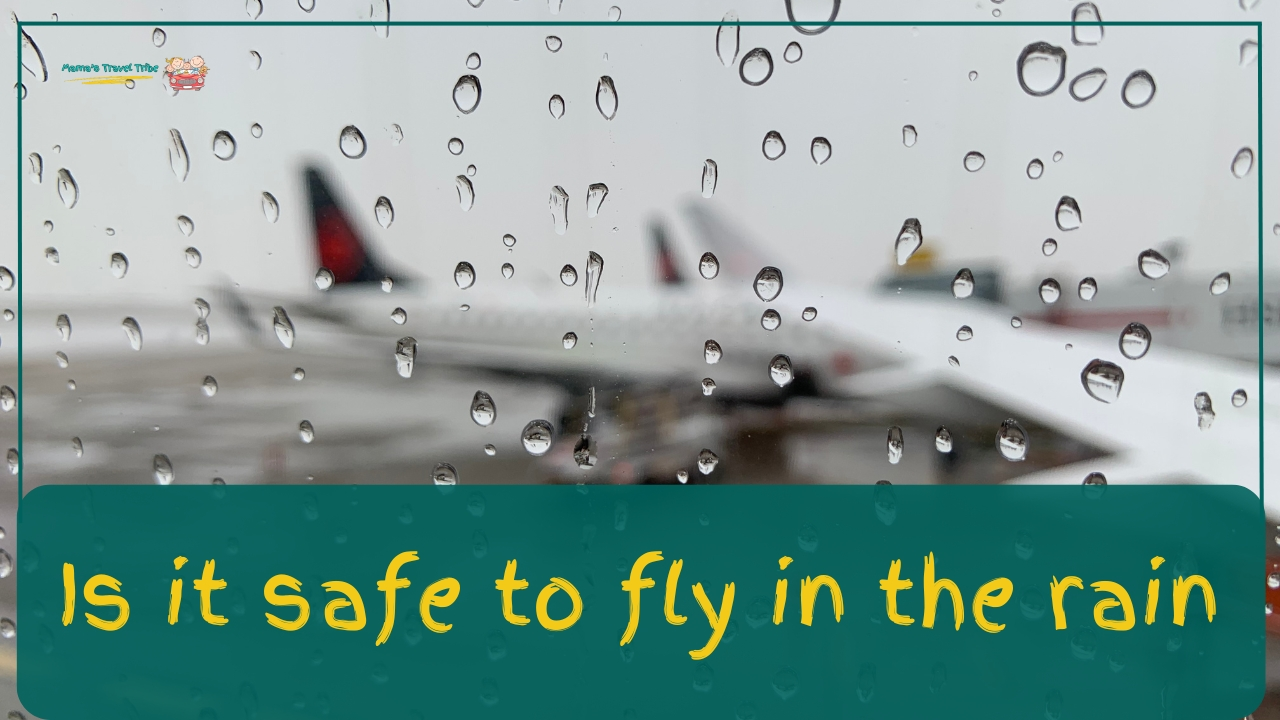“Is it safe to fly in the rain?” is a common concern among travelers. The short answer is – Yes, modern planes and well-trained pilots make flying in the rain safe and reliable.
But are you safe when there’s wind or thunder with the rain? In this detailed guide, you’ll learn everything, including safety considerations and some critical tips.
Why Is It Safe to Fly in the Rain? (4 Reasons)
Flying in the rain is safe because modern aircraft are built to handle various weather conditions, including rain. Pilots use advanced radar systems to avoid heavy storms and ensure a smooth flight. So, while it might look stormy outside, inside the plane, you’re safe and sound.
Aircraft Design and Engineering

Modern aircraft are designed to withstand various weather conditions, including rain. Engineers use strong materials and advanced construction techniques to make planes durable and reliable.
For example, aircraft materials like aluminum and composite materials are chosen for their strength and resistance to corrosion. The wings and body of the plane are carefully designed to handle the extra weight of rain and the turbulence it might cause.
To make it even clearer, think about the Boeing 787 Dreamliner. This aircraft is built with composite materials that are lighter and stronger than traditional metals. These materials help the plane perform better in bad weather.
Another example is the Airbus A380, which has strong and flexible wings designed to handle rough air and keep passengers comfortable.
Weather Radar Systems
Pilots rely on advanced weather radar systems to ensure safe flights in all kinds of weather. These radar systems allow pilots to see detailed images of weather patterns around the aircraft. This helps them detect and navigate around severe weather.
For instance, modern planes use radar systems like the Honeywell IntuVue RDR-4000, which provides a 3D view of weather conditions up to 320 nautical miles away. This technology lets pilots see thunderstorms and other weather hazards from far away. This gives them plenty of time to change course if needed.
Experienced Pilots
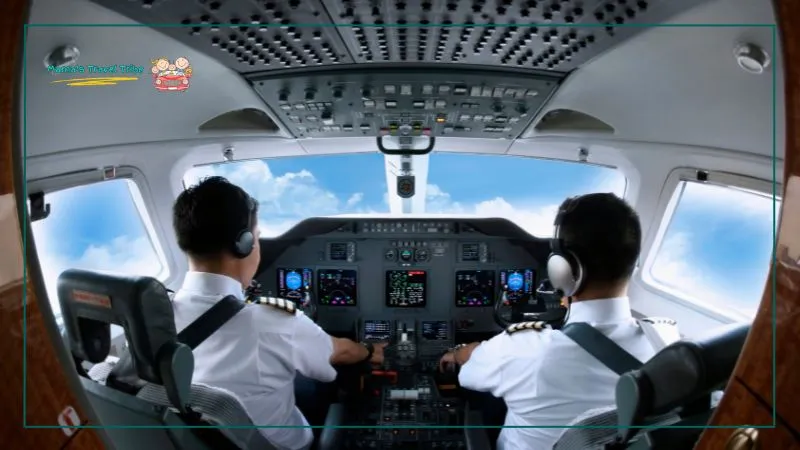
Pilots undergo extensive training to handle various weather conditions. They are well-prepared to fly in the rain and can make informed decisions to ensure the safety of the flight. When you’re on a plane, you can trust that the pilot has practiced flying in many different scenarios, including rain. They know what to expect and how to react.
For example, pilots practice in-flight simulators that mimic real-life weather situations, like heavy rain. This training helps them stay calm and make the best choices during your flight.
Air Traffic Control (ATC)
Air Traffic Control (ATC) plays a crucial role in keeping flights safe, especially in bad weather. ATC monitors weather conditions and provides guidance to pilots, ensuring safe flight paths and altitudes. They help manage air traffic efficiently. This is especially important when the weather is challenging.
Regular and thorough maintenance of aircraft ensures that all systems are functioning correctly. This also includes those crucial for handling rain and other weather conditions. Aircraft undergo routine inspections where mechanics check every part of the plane, from the engines to the electronics.
For instance, systems that deal with de-icing and anti-icing are inspected to ensure they can handle cold, wet conditions. Mechanics also look for potential issues that could be exacerbated by moisture, such as corrosion or leaks.
Note that aircraft maintenance protocols are governed by strict regulations. Airlines must follow detailed checklists to ensure every aspect of the aircraft is in top condition.
Aerodynamics and Performance
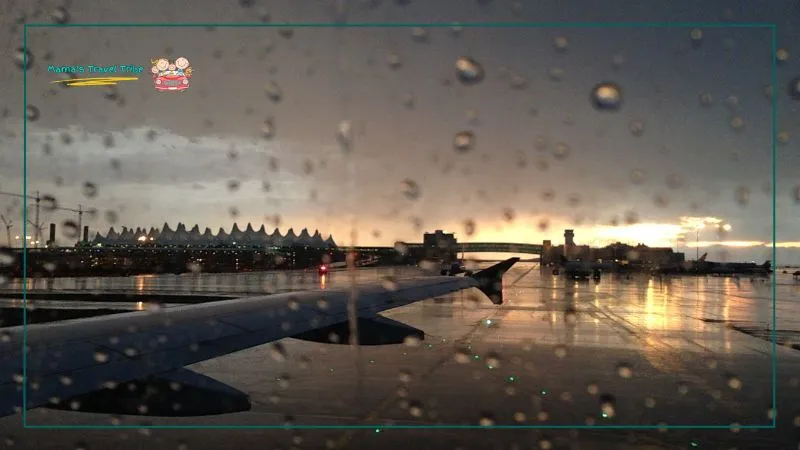
Rain has minimal impact on the aerodynamics and performance of modern aircraft. The design of an aircraft allows it to fly smoothly, even in wet conditions. The shape of the wings and the body of the plane are crafted to reduce drag and maintain lift, regardless of rain.
Is It Safe to Fly in Cloudy Weather? Let’s Find Out
Flying in cloudy weather is generally safe because modern aircraft are equipped with advanced instruments that help pilots navigate through clouds. Pilots use these tools to ensure a smooth and safe flight, even when visibility is low.
Pilots rely on a range of instruments to safely fly through clouds. One key instrument is the altimeter, which tells the pilot the aircraft’s altitude above the ground. This is crucial when flying in clouds because it helps the pilot maintain a safe height.
Another essential tool is the artificial horizon. It shows the aircraft’s orientation relative to the ground. This helps the pilot know if the plane is level, even when they can’t see the horizon due to clouds.
Moreover, air traffic control (ATC) plays a vital role in guiding planes through cloudy conditions. ATC provides pilots with real-time information about their surroundings, ensuring they stay on course and avoid other aircraft.
Aircraft are also equipped with radar and GPS systems that help pilots navigate. These systems provide detailed information about the plane’s position and any potential obstacles. This allows pilots to make informed decisions even when they can’t see clearly out the windows.
Is It Safe to Fly in Rain and Wind? (Everything to Know)
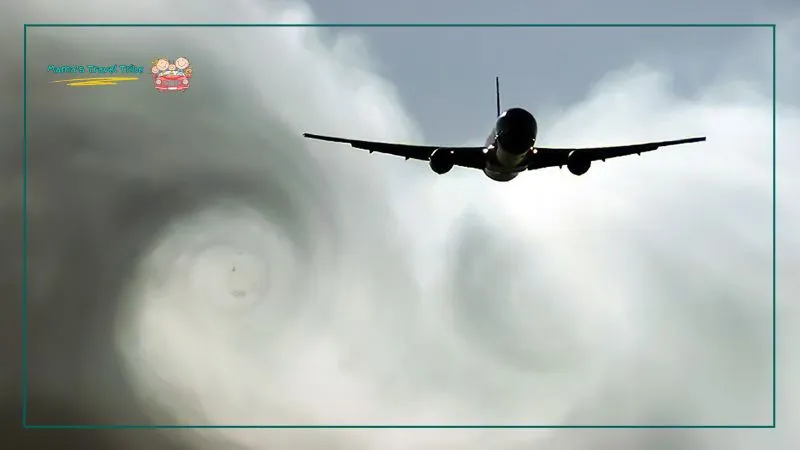
Flying in rain and wind is safe because modern aircraft and experienced pilots are equipped to handle these conditions. Advanced technology and rigorous training ensure that flights remain smooth and secure, even in challenging weather.
Understanding Turbulence When Flying in Rain and Wind
Turbulence is a common experience when flying in rain and wind, but it’s generally not dangerous. Turbulence happens when the plane flies through irregular air currents, which can be more pronounced in stormy weather.
Here are some causes of turbulence:
| Cause | Description | Common Areas |
| Thermal Turbulence | Caused by rising warm air and descending cool air, commonly found in areas with convective activity like thunderstorms. | Over land, particularly during the day and in warm climates. |
| Mechanical Turbulence | Occurs when airflow is disrupted by obstacles such as buildings, mountains, or terrain irregularities. | Near the ground, around buildings, mountains, and rough terrain. |
| Clear Air Turbulence (CAT) | Found at high altitudes, often near jet streams, and is not associated with visible weather phenomena. | High altitudes, especially near jet streams and in clear weather. |
| Wake Turbulence | Created by the wake of a passing aircraft, particularly large ones, and can affect trailing planes. | Behind large aircraft, particularly during takeoff and landing. |
| Mountain Wave Turbulence | Generated by airflow over mountain ranges, causing waves of air to form on the downwind side. | Downwind side of mountain ranges, often at high altitudes. |
Modern aircraft are designed to withstand turbulence. The wings are flexible and can absorb the energy from turbulent air, reducing the impact on the plane. This means that while turbulence might feel uncomfortable, the plane is built to handle it safely.
Moreover, safety measures, such as seat belts, are in place to protect passengers during turbulence.
When you’re managing a flight in the rain with a baby, you will need some proven tips to make your journey smoother. Check them out in Flying with a 6-Month-Old: Stress-Free Travel Tips.
Can Planes Fly in Thunderstorms? (Know the Answer)
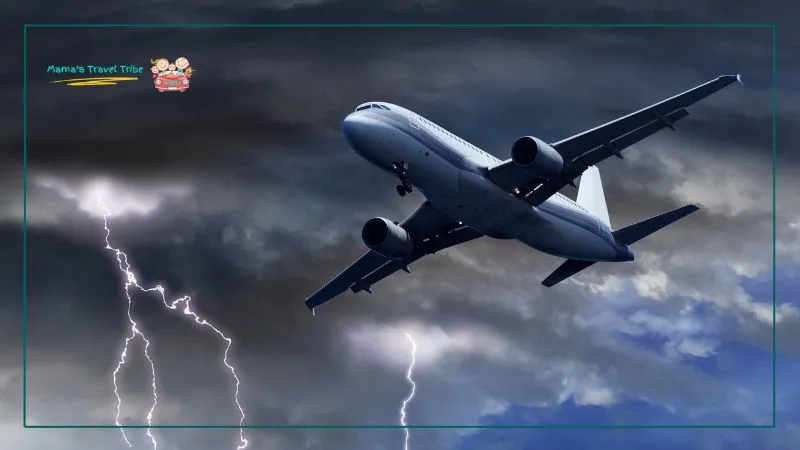
Planes do not fly through thunderstorms because they pose significant risks, such as severe turbulence, lightning, and hail. Severe turbulence can cause the plane to shake violently, making it uncomfortable and potentially dangerous for passengers and crew. Pilots use radar to detect storms and navigate around them, ensuring passenger safety.
To avoid these risks, pilots use advanced weather radar to detect thunderstorms from a distance. They receive real-time updates from air traffic control and weather services. This allows them to change course and avoid flying directly into storm cells.
Flying in challenging weather can be stressful, especially with a baby. Ensure your little one’s safety with these important tips in 10 Safety Tips for Flying with an Infant on Your Lap.
Is It Dangerous to Fly in Snow? Yes or No?
Flying in snow is generally safe because aircraft and airports are equipped to handle snowy conditions. Pilots receive specialized training, and planes are de-iced before takeoff to ensure safety. Snow can impact flights in several ways, but safety measures are in place to manage these challenges.
Runways and taxiways are also cleared of snow to ensure safe takeoff and landing. Airports use snow plows, brushes, and de-icing agents to keep these surfaces clear. Pilots receive training to handle snowy conditions, including how to perform takeoffs and landings on slippery runways.
Additionally, modern aircraft are equipped with anti-icing systems that prevent ice from forming on critical surfaces during flight. These systems include heated wings and engine inlets. They keep ice from accumulating while the plane is airborne.
Overall, these precautions make flying in snow safe and reliable.
Managing Fear of Flying in Bad Weather: Tips and Strategies
To manage fear of flying in bad weather, understand how planes handle weather conditions, stay informed about your flight, practice relaxation techniques, and consider professional help if needed. These strategies can help you feel more comfortable and confident when flying.
Understanding How Planes Handle Bad Weather
Knowing that planes are designed to handle bad weather can ease your fears. Modern aircraft are built with strong materials and advanced technology to fly safely through rain, wind, and snow.
Pilots are highly trained to navigate these conditions. They use instruments and radar to avoid storms and ensure a smooth flight. Learning about these safety features can help you feel more secure.
Staying Informed About Your Flight
Staying informed about your flight can reduce anxiety. Before your trip, check the weather forecast for your departure and arrival cities. During the flight, listen to updates from the pilot, who will keep you informed about weather conditions and any expected turbulence.
Knowing what’s happening can make you feel more in control.
Practicing Relaxation Techniques
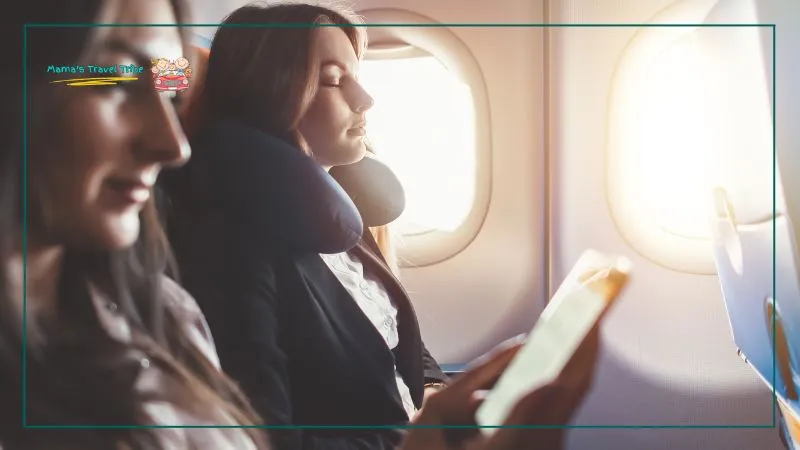
Relaxation techniques can help you stay calm during a flight. Deep breathing exercises are simple and effective. Inhale slowly through your nose, hold for a few seconds and exhale through your mouth.
Repeat this several times to help relax your body and mind. You can also try visualization techniques, imagining yourself in a calm and safe place, or listening to calming music or guided meditations.
Seeking Professional Help
If your fear of flying in bad weather is severe, consider seeking professional help. Therapists who specialize in aviation anxiety can provide strategies and support to help you manage your fears.
Cognitive-behavioral therapy (CBT) is particularly effective for treating anxiety, helping you change negative thought patterns and develop coping mechanisms. Some airlines also offer fear of flying courses that include practice flights and expert advice.
Keeping Busy During the Flight
Keeping yourself occupied can distract you from worrying about the weather. Bring along activities that you enjoy, such as reading a book, watching a movie, or playing a game on your phone or tablet.
Engaging in these activities can help pass the time and keep your mind off the flight. Chatting with a travel companion or a friendly seatmate can also be a good distraction.
Flying in Cloudy Weather: Safety Considerations
Flying in cloudy weather is generally safe due to advanced instruments that help pilots navigate with low visibility. Pilots rely on these tools and air traffic control to ensure a safe flight, even when clouds obscure their view.
Trusting the Pilot’s Training and Experience
As a passenger, you can feel safe knowing that pilots undergo extensive training to handle all kinds of weather, including clouds. They learn to fly using instruments instead of relying on what they see outside.
This means they are well-prepared to navigate through clouds safely. Pilots practice these skills in simulators that mimic real-life conditions, so they are ready for any situation.
Trust the Clear Communication with Air Traffic Control

Air traffic control (ATC) is always in touch with the pilots, providing them with real-time updates about weather conditions and other planes in the area. This constant communication helps pilots make informed decisions and avoid any potential hazards. Knowing that ATC is guiding the flight can help you feel more secure as a passenger.
Understand the Role of Weather Radar
Weather radar is another crucial tool that keeps flights safe in cloudy weather. It helps pilots detect any severe weather, like thunderstorms, well in advance. This allows them to adjust the flight path to avoid these conditions.
With weather radar, pilots can ensure that the plane stays on the safest route possible, even when clouds are thick.
Stay Seated and Buckled

Turbulence can be more common in cloudy weather, so it’s a good idea to stay seated with your seatbelt fastened whenever possible. This ensures your safety if the plane experiences unexpected bumps. Always listen to the crew’s instructions regarding seat belt usage.
Making your seating area as cozy as possible can help ease your nerves. Learn how to turn your airplane seat into a comfortable bed in How to Turn Your Airplane Seat Into a Cozy Retreat.
Stay Hydrated and Comfortable
Drink plenty of water to stay hydrated, as airplane cabins can be dry. Also, bring a neck pillow or a small blanket to make yourself more comfortable. Being physically comfortable can help you feel more at ease mentally as well.
Talk to Fellow Passengers or Crew

If you’re feeling particularly anxious, talking to fellow passengers or the flight attendants can be comforting. Sometimes, a friendly conversation can distract you and make the flight feel less stressful.
Relaxation and Distraction Techniques
As a passenger, it’s important to stay calm and relaxed during the flight. Bringing along activities like books, movies, or games can help keep your mind occupied.
Listening to calming music or practicing deep breathing exercises can also help reduce any anxiety about flying in cloudy weather. Remember, staying relaxed contributes to a more enjoyable and stress-free flight experience.
Conclusion
Flying in the rain is generally safe due to several factors:
- Modern Aircraft Design: Planes are built to withstand various weather conditions, including rain.
- Advanced Weather Radar: Pilots use radar to detect and navigate around severe weather.
- Experienced Pilots: Pilots undergo extensive training to handle flying in bad weather.
- Regular Maintenance: Aircraft are regularly inspected to ensure all systems are functioning correctly.
So, next time you’re flying in the rain, you can feel confident knowing that everything is in place to ensure a safe journey.

